
Poland history & facts in brief
Oswiecim (Auschwitz)
Excerpted from Wikipedia, the free encyclopedia.
Auschwitz is the name loosely used to identify three
main Nazi German concentration camps and 45-50 sub-camps.
The name is derived from the Germanized form of the
nearby Polish town of Oswiecim, situated about 60 km
southwest of Krakow.
Beginning in 1940, Nazi Germany built several concentration
camps and an extermination camp in the area, which at
the time had been annexed by Nazi Germany.
The camps were a major constituent of the Holocaust.
The three main camps were:
Auschwitz I, the original concentration camp which served
as the administrative centre for the whole complex,
and was the site of the deaths of roughly 70,000 Polish
intellectuals, gay men and Soviet Prisoners of War.
Auschwitz II (Birkenau), an extermination camp and the
site of the deaths of roughly 1 million Jews, 75,000
Poles, gay men and some 19,000 Roma.
Auschwitz III (Monowitz), which served as a labor camp
for the IG Farben company.
After the war, Auschwitz remained in a state of disrepair
for several years.
The Buna Werke were taken over by the Polish
government and became the foundation for the chemical
industry of the region.
The Polish government then decided to restore Auschwitz
I and turn it into a museum honoring the victims of
nazism; Auschwitz II, where buildings were prone to
decay, was preserved but not restored.
Today, the Auschwitz I museum site combines elements
from several periods into a single complex: for example
the gas chamber at Auschwitz I (which did not exist
by the war's end) was restored and the fence was moved
(because of building being done after the war but before
the establishment of the museum).
However, in most cases the departure from the historical
truth is minor, and is mentioned as such.
Auschwitz II and the remains of the gas chambers there
are also open to the public.
The Auschwitz concentration camp is part of the UNESCO
list of World Heritage Sites.
In 1979, the newly elected Polish Pope John Paul II
celebrated Mass on the grounds of Auschwitz II to some
500,000 people.
After the pope had announced that Edith Stein would
be beatified, some Catholics erected a cross near bunker
2 of Auschwitz II where she had been gassed. A short
while later, a Star of David appeared at the site, leading
to a proliferation of religious symbols there; eventually
they were removed.
Carmelite nuns opened a convent near Auschwitz I in
1984.
After some Jewish groups called for the removal of the
convent, representatives of the Catholic Church agreed
in 1987.
One year later the Carmelites erected the 8 m (26 ft)
tall cross from the 1979 mass near their site, just
outside block 11 and barely visible from within the
camp.
This led to protests by Jewish groups, who said that
mostly Jews were killed at Auschwitz and demanded that
religious symbols be kept away from the site.
Some Catholics have pointed out that the people killed
in Auschwitz I were mainly Polish Catholics.
The Catholic Church told the Carmelites to move by 1989,
but they stayed on until 1993, leaving the large cross
behind.
In 1998, after further calls to remove the cross, some
300 smaller crosses were erected by local activists
near the large one, leading to further protests and
heated exchanges.
Following an agreement between the Polish Catholic Church
and the Polish government, the smaller crosses were
removed in 1999 but the large papal one remains. See
Auschwitz
cross for more details.
Being Hungarian born I could not miss the name of
Imre Kertész, Hungarian Nobel laureate in Literature,
stayed in Auschwitz II for three days in the summer
of 1944 before being judged fit to work and transferred
to Buchenwald, also
- Maksymilian Kolbe, Franciscan friar, imprisoned
in Auschwitz I; volunteered for starvation in place
of another prisoner and was killed in 1941.
- Adam Kozlowiecki, Polish Cardinal.
- Edith Stein, Catholic nun and philosopher of Jewish
ancestry, gassed in Auschwitz II.
- Elie Wiesel, survived Auschwitz III Monowitz and
later wrote about his experiences.
- Ruth Neray, author of To Auschwitz and Back:
My Personal Journey and
- Home Army, volunteered to go to Auschwitz, organised
resistance in Auschwitz, informed Western Allies about
the atrocities, later took part in the Warsaw Uprising,
were amongst the list of famous people who were inprisoned
here.
Here I will have to apologise to break away from further
explanations of Auschwitz.
The story have been told many, many times and my main
object is a travelogue kind of pages of places we have
visited.
Here I will provide a direct link to the Wikipedia,
the free encyclopedia's
Auschwitz page for a very detailed description,
links and pictures.
External links

This page was retrieved and condensed from
(http://en.wikipedia.org/wiki/Oswiecim (Auschwitz))
July, 2005
All text is available under the terms of the GNU Free
Documentation License
(see
Copyrights for details).

Hui Chin and I visited
Oswiecim (Auschwitz) during our 2005 trip in Europe.
While in Krakow we taken time out to take a train to
visit Oswiecim or as it is probably better known as
Auschwitz, the infamous concentration or death camp
of WWII.

Some of my photos of Oswiecim (Auschwitz).
You can click on
these photos for an enlargement
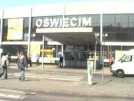 |
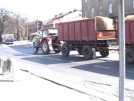 |
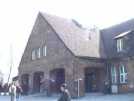 |
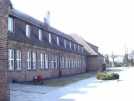 |
| Oswiecim (Auschwitz) |
Oswiecim (Auschwitz) |
Oswiecim (Auschwitz) |
Oswiecim (Auschwitz) |
 |
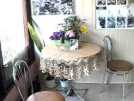 |
 |
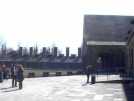 |
| Oswiecim (Auschwitz) |
Oswiecim (Auschwitz) R.I.P.
Pope John Paul II |
Oswiecim (Auschwitz) |
Oswiecim (Auschwitz) |
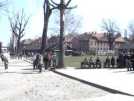 |
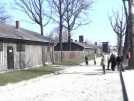 |
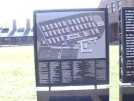 |
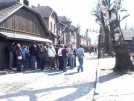 |
| Oswiecim (Auschwitz) |
Oswiecim (Auschwitz) |
Oswiecim (Auschwitz) |
Oswiecim (Auschwitz) |
 |
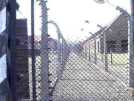 |
 |
 |
| Oswiecim (Auschwitz) |
Oswiecim (Auschwitz) |
Oswiecim (Auschwitz) |
Oswiecim (Auschwitz) |
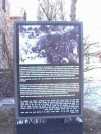 |
 |
 |
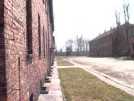 |
| Oswiecim (Auschwitz) |
Oswiecim (Auschwitz) |
Oswiecim (Auschwitz) |
Oswiecim (Auschwitz) |
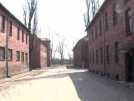 |
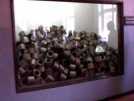 |
 |
 |
| Oswiecim (Auschwitz) |
Oswiecim (Auschwitz) |
Oswiecim (Auschwitz) |
Oswiecim (Auschwitz) |
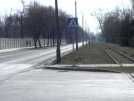 |
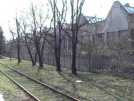 |
 |
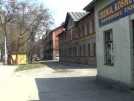 |
| Oswiecim (Auschwitz) |
Oswiecim (Auschwitz) |
Oswiecim (Auschwitz) |
Oswiecim (Auschwitz) |
Oswiecim (Auschwitz) busess
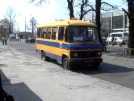 |
| Oswiecim (Auschwitz) trains |
Oswiecim (Auschwitz) trains
 |
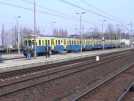 |
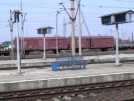 |
| Oswiecim (Auschwitz) trains |
Oswiecim (Auschwitz) trains |
Oswiecim (Auschwitz) trains |
 |
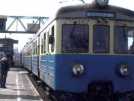 |
| Oswiecim (Auschwitz) trains |
Oswiecim (Auschwitz) trains |

Site
Index
Back to Top
Photos Index
Thanks for coming, I hope you
have enjoyed it, will recommend
it to your friends, and will come
back later to see my site developing
and expanding.
I'm trying to make my pages
enjoyable and trouble free for everyone,
please let me know of any mistakes
or trouble with links, so I can
fix any problem as soon as possible.
These pages are best viewed with monitor
resolution set at 640x480 and kept simple
on purpose so everyone can enjoy them
across all media and platforms.
Thank you.
You can e-mail me at
Webmaster

|